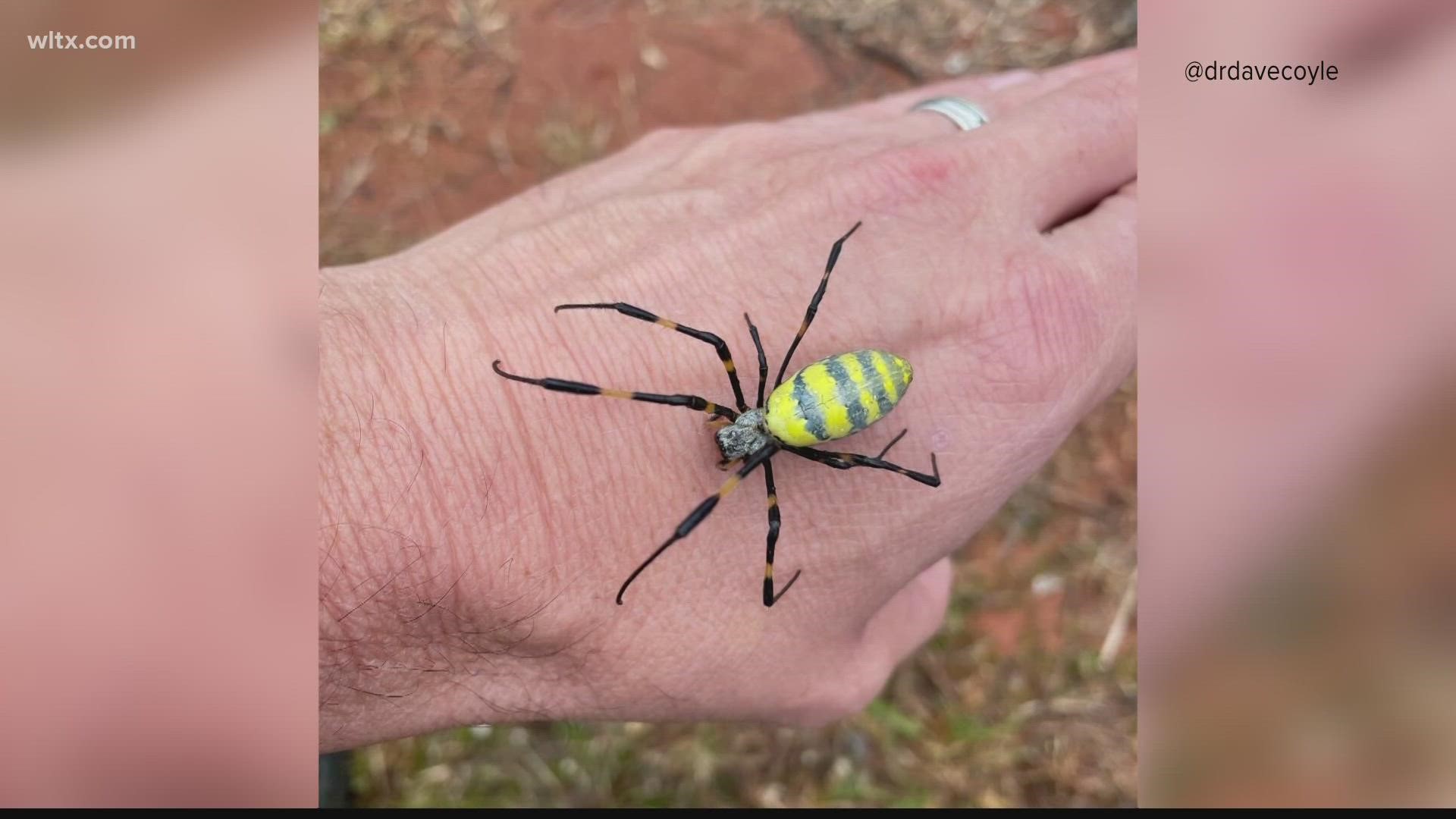COLUMBIA, S.C. — Clemson University professors are studying a newer species of spider that has made its way to the southeast over the past few years.
Black and yellow, vibrant, but not deadly, the Joro spider is now being seen here in the Midlands.
"The difference with the Joro spiders is it's not native to North America. It's relatively new here. It was discovered in just not even a decade ago. We suspect its been here a bit over a decade, but it was discovered in north Georgia and the populations are increasing incredibly rapidly," said David Coyle, assistant professor of forest health and invasive species at Clemson University.
The worry scientists have is that this Joro spider will take web space and food away from other species if their population continues to grow.
"The odds are, they're pushing out native species, but we just don't know yet," Coyle said.
Experts explain that for the sake of a balanced eco-system, we need all kinds of spiders, not just one.
"Different types of spiders catch different things. Joro spiders are large enough that they're probably not going to catch really tiny things like mosquitos," Coyle said.
Coyle tells News 19 Joro spiders lay up to 500 eggs each year.
"That's what a lot of us are working really hard to try to figure out is what's the deal with these things. We know they're everywhere, we're getting reports all over the place, they're certainly spreading," Coyle said.
There's also a way you can be involved in research of the Joro spider. All you have to do is download this iNaturalist app, take a photo inside the app of the Joro spider you see in person and upload it. You'll be geolocated into the database.
Experts tell News 19 Joro spider sightings have been reported in Georgia, the Carolinas and Tennessee.

